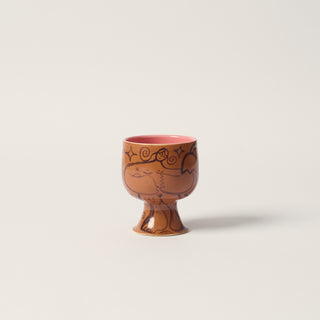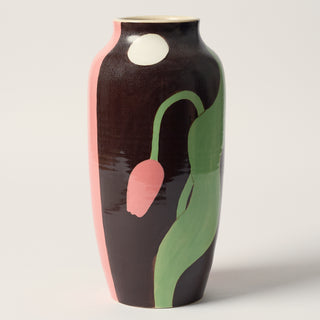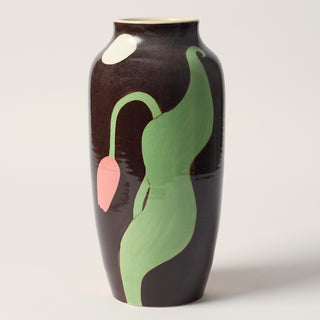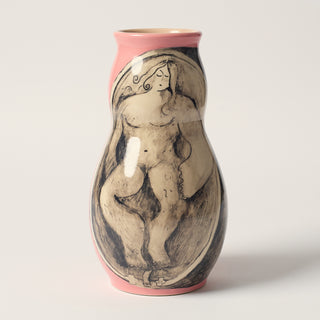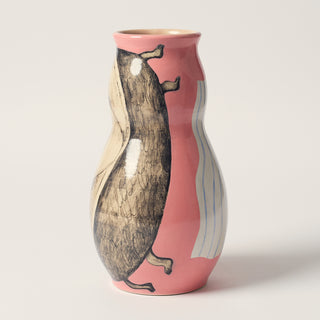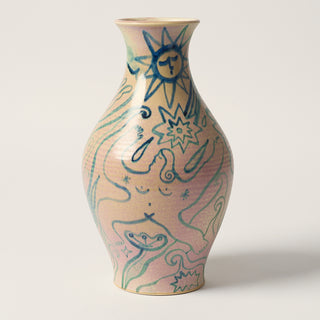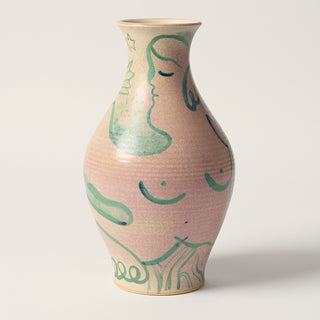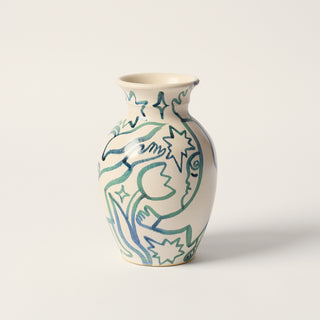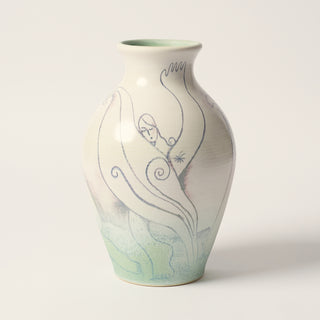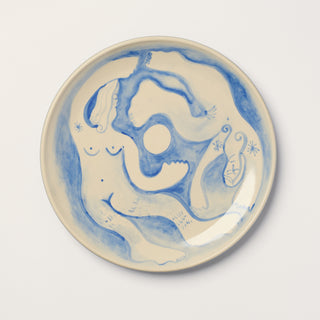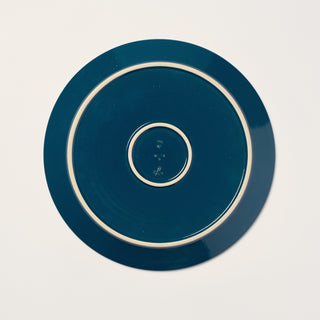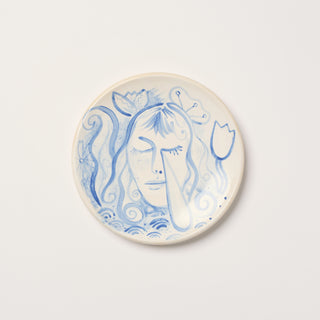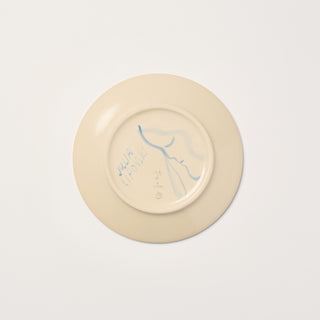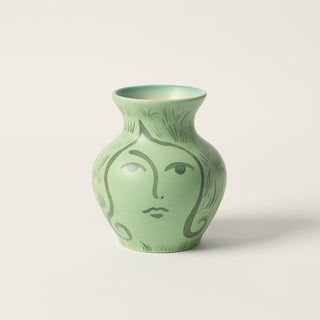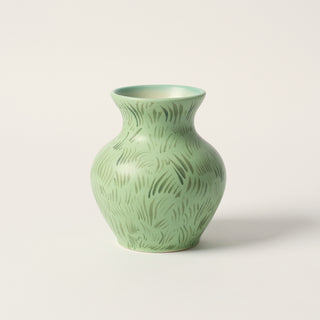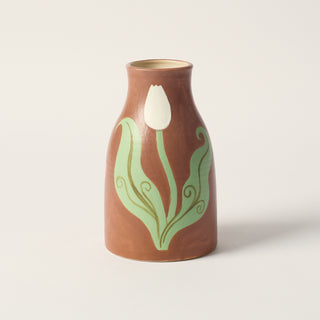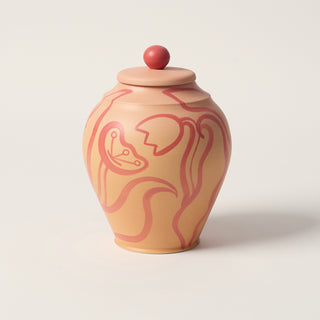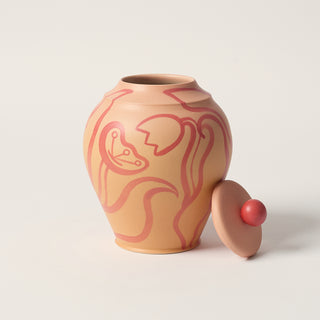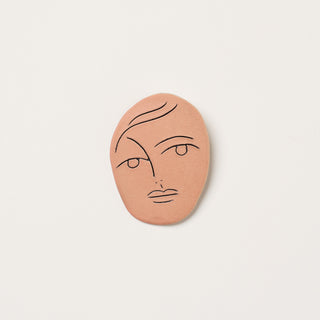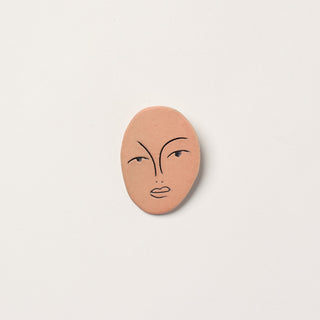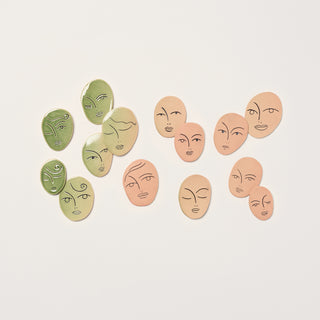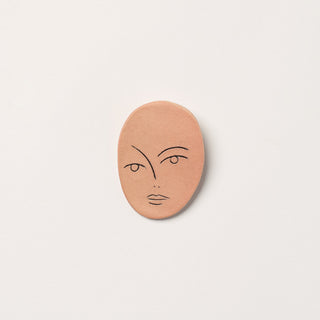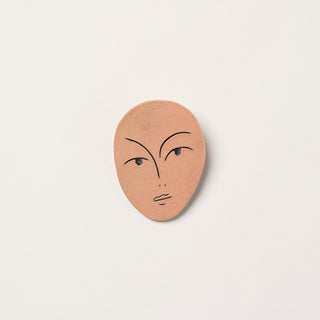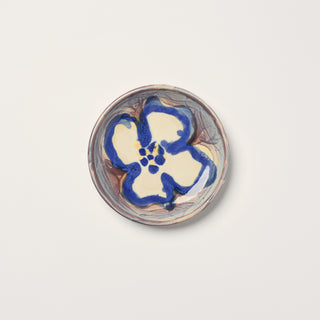Inspired by Julia Lipovsky’s relationship between the earth and the unknown, The Moon, The Garden, and Me invites the emotional complexity of life into rituals of service and care. Wild, organic, and strong, this collection explores femininity and domestic labor from a contemplative and personal lens.
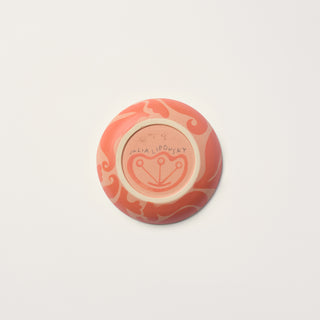
With roots reaching back to 1880, Rookwood has long been a place where creative vision is honored, celebrated, and boldly pursued. The Artist Series continues that legacy by inviting artists from a range of disciplines to bring their own voice to the medium of ceramics. Whether hand-decorating existing forms or collaborating with our team to develop original work, these artists bring fresh perspectives that challenge tradition and expand what’s possible. Staying true to Rookwood’s longstanding belief in recognizing the individual maker, each piece is signed by the artist alongside our iconic flame—a symbol of shared creativity and enduring craftsmanship. In that spirit, we’re proud to welcome Julia Lipovsky to this year’s Artist Series.
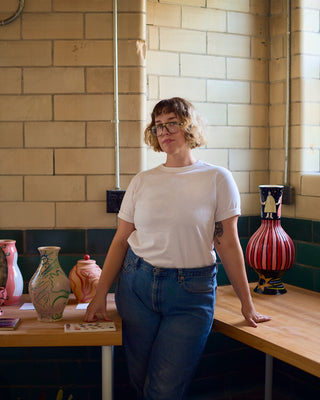
Julia Lipovsky is an artist and illustrator living and working in Cincinnati, Ohio. Born the youngest of seven children in a family of educators, Julia started drawing as a child and never stopped. She earned a BFA from the Maryland Institute College of Art (2015) in fine art and creative writing before moving to Cincinnati, where she has made a life filled with creativity, collaboration, and connection.





